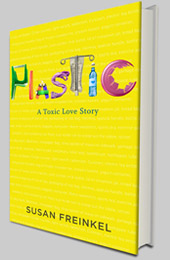The U.S. has a dismal record recycling used plastics: scarcely seven percent get a shot at a second life. But the plastics industry is starting to rally behind a new option for dealing with plastic waste: burning it for energy.
Dow Chemical – the country’s largest producer of polyethylene – recently announced a successful test project in which it burned 578 pounds of the filmy plastic scrap to generate energy. Dow was able to extract nearly all the energy embedded in the material, showing that used plastic can be used to create heat or electricity, said Jeff Wooster, plastics sustainability leader for Dow’s North American Plastics business. It also demonstrated a feasible way of dealing with hard-to-recycle plastics, like the lightweight films used in packaging, said Wooster. “We were looking for a way to make use of the material so it doesn’t just end up in landfill.”
It’s not surprising that plastics can be a source of heat or electricity; they are, after all, originally derived from natural gas or oil. Many types of plastic burn hotter than wood or coal, making them fantastic fodder for energy.
Still incinerating plastics has long been controversial. Proponents of waste to energy technology say today’s plants are cleaner and safer than incinerators of the past. Arrays of scrubbers and filters capture dangerous chemicals – hydrochloric acid, sulfur dioxide, dioxins, furans and heavy metals – as well as small particulates. The plants are said to produce less dioxin than is released from home fireplaces and backyard barbecues.
But even those small amounts of dioxin worry environmentalists, who point out that the plants also produce a lot of residual ash. Critics also argue that waste-to-energy facilities are so expensive to build that they end up undercutting traditional recycling programs. The need to keep the plants going acts as an incentive to keep producing, rather than reducing waste, said Brenda Platt, of the Institute for Local Self Reliance in Washington, D.C. “You have to keep feeding the beast.” She called the plants “wasted energy.”
In places short on landfill space, like Europe or Japan, such environmental concerns have carried little weight. Waste-to-energy plants are a mainstay of garbage disposal in Europe, as well as an important source of heat or electricity. About 400 plants are scattered across the continent, and altogether they take care of about 30 percent of the plastics Europe diverts from landfill. Even famously green countries have embraced the strategy. The Netherlands, for instance, landfills only 3 percent of its trash, and burns 35 percent for energy.
In the U.S. – where there’s room to continue the debate, so to speak — there are only 87 waste-to -energy facilities, most on the congested East Coast, and no new ones have been built since the mid-1990s.
But Dow and other makers of raw plastics are hoping to bring an end to that informal moratorium, putting forth waste-to-energy as a solution to the eco-angst that has fueled calls for bans on plastic bags, take-out containers and other packaging. The American Chemistry Council has recently been touting the technology as both a renewable energy source and a form of recycling. (The European Union also counts it as recycling, which is one reason that countries like the Netherlands boast 90-percent-plus recycling rates.) To bolster its case, the ACC just released studies reporting that waste-to-energy plants in four communities were using significant amounts of unrecycled plastics, and that the programs complemented existing recycling efforts. Recapturing waste plastic would help to create a “reliable source of alternative energy from an abundant, no-cost feedstock” while diverting potentially valuable material from landfills, the ACC concluded.
Whether such arguments gain more traction in today’s political landscape remains to be seen. But stay tuned for a lively debate.



